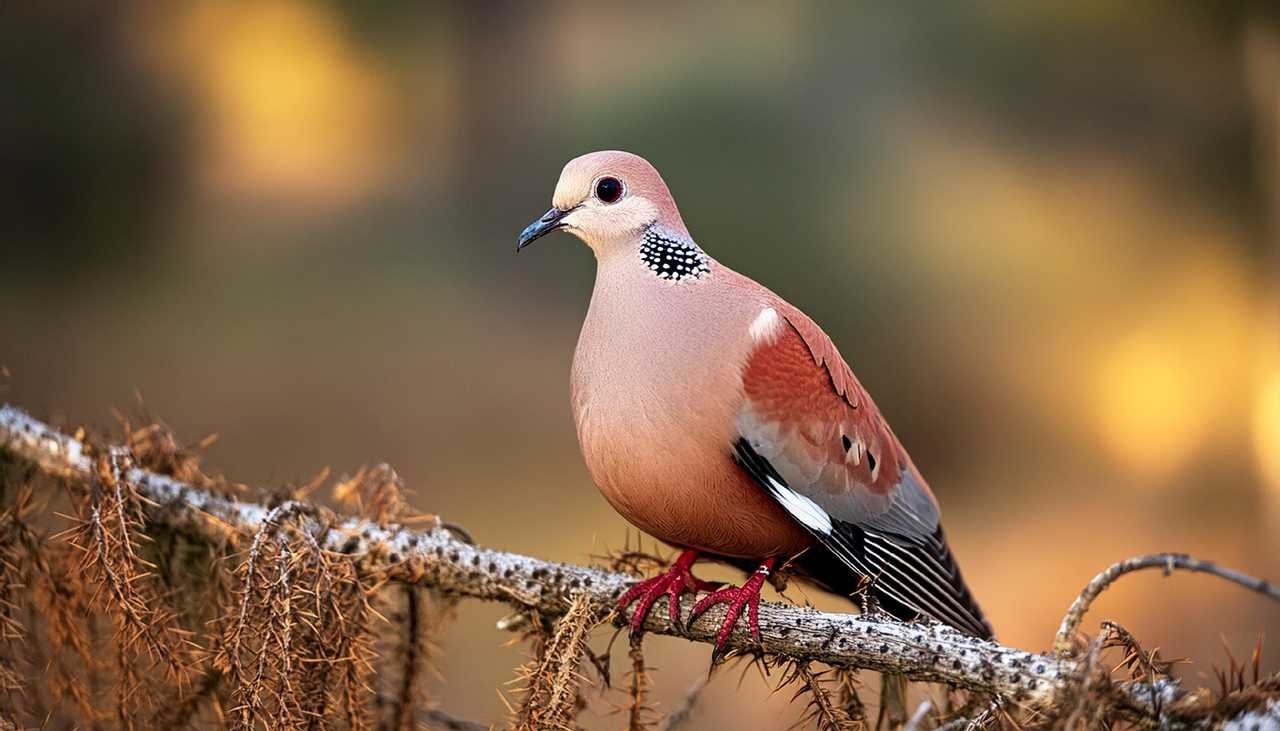Did you ever catch sight of a small bird, just about the size of a sparrow, darting over a field, leaving a hint of reddish-brown behind? Might be the common ground dove (Columbina passerina), a delightful bird mostly found on the ground. They aren’t showy birds, yet their simple beauty and intriguing things they do, make them fun to see for people who like watching birds, be they newbies or experts.
Identifying the Common Ground Dove
Though these small doves may not be the most showy birds, their gentle charm comes from their fine features and distinct patterns. Here are a few things to spot when recognizing a Common Ground Dove:
Size and Shape
- Imagine tiny as a sparrow! Common Ground Doves are small, about 6.5 inches (17 cm) long only.
- They carry short, round wings and tails giving them a neat look.
- Not like some doves with long, graceful necks, these have a bulkier build with short legs.
Coloration
- They sport a dusty, light brown coat with darker spots on the back and wings. This helps it hide well in its natural surroundings.
- When it flies, you can see an interesting detail: rusty-red patches on its wings. This breaks its cover for a bit.
- If you look really closely, you may also spot barely-there, scaly patterns on their head and chest. But this isn’t always easy – they blend in with nature quite well.
Behavior
People often find it hard to see it. Why? They’ve got a timid side and they favor staying out of sight. In the tall grass or low bushes, you’ll often find them hiding.
Spotting them can be tricky, but some signs may lead you to them:
- Foraging on the Ground: Keep an eye for tiny birds walking or hopping on the ground. They like staying close to brushes or covers to swiftly vanish if scared.
- The Bobbing Motion: They bob their heads with each step while searching for food. This is a handy clue to spot them, even if the bird is out of sight.
- Flushing with a Whirr: If they sense danger, it will instantly take flight, causing a rapid fluttering noise from its wings. This can be a surprise, particularly if you weren’t prepared for it!
Calls
Despite not being a fancy songbird, it has a unique way of singing. Let’s explore a table that describes their sounds:
| Call Type | Description |
|---|---|
| Common Call | Soft, repetitive “woo-oo” with the second syllable rising slightly in pitch |
| Less Frequent Calls | Short, guttural cooing sounds or a rapid series of “cooks” |
Common Ground Dove vs. Similar Species
| Feature | Common Ground Dove | Inca Dove | Mourning Dove |
|---|---|---|---|
| Size | Sparrow-sized (6.5 inches) | Slightly larger than sparrow (7-8 inches) | Larger than sparrow (9-13 inches) |
| Shape | Stocky build, short tail | Slender build, long tail | Slender build, long tail |
| Coloration | Dusty brown with darker speckles, rusty-red wing patches | Grayish-brown with black spots on wings, black facial mask (male) | Light brown with darker markings, iridescent feathers on neck (male) |
| Behavior | Ground-dwelling, secretive | Prefers perches, more social | Ground-dwelling, but bolder than Common Ground Dove |
| Habitat | Open woodlands, grasslands, scrublands | Parks, gardens, urban edges | Open woodlands, farmlands, edges of forests |
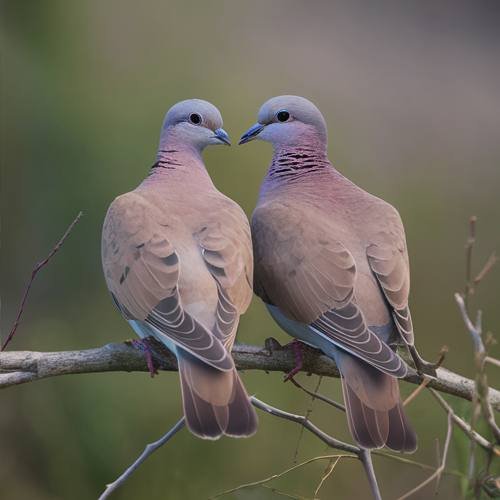
Habitat
The common ground dove isn’t picky about where it lives, it’s called a habitat generalist. It thrives in many places. Still, it likes spots with few trees or high grasses best. These places give it the cover it needs. Places it enjoys include:
- Open woodlands: A perfect spot for the common ground dove, thanks to the speckled sunlight and occasional trees.
- Grasslands: Huge stretches of grass give ample chances for feeding and good hideout for the bird dwelling on the land.
- Scrublands: Low shrubs and bushes give two-fold benefits of food and shelter to them.
- Desert areas: Against expectations, the ground dove can live in dry areas, following the provision of some green cover.
- Urban edges: These birds show good adjustability to places reshaped by humans, even exploring parks and gardens on city fringes.
Here’s a chart showing a few habitats:
| Habitat Type | Description |
|---|---|
| Farms and agricultural fields | You’ll find it in open fields with randomly placed bushes that make perfect homes for them. |
| Roadsides and edges of open woodlands | Where the forest ends and the open land begins, it’s a dove’s paradise with a bunch of grass, bushes, and few trees scattered here and there. |
| Riparian corridors (areas along rivers or streams) | Riverside and streamside plants create a rich, varied home for these doves, especially if there are tall grasses and trees in the mix. |
| Desert washes (shallow, dry valleys) | Even in dry deserts, doves get by pretty well, thanks to patches of green plants that pop up in wash areas. These patches offer the doves the food and cover they need to survive. |
Finding Common Ground Doves
Now that you’re familiar with the identification tips and preferred habitats, you’re well on your way to finding Common Ground Doves in the wild. Here are some additional pointers to increase your chances of success:
- Timing is Key: They typically buzz around mostly in the wee hours of the morning and during the late afternoon. These schedules match the cooler parts of the day. These birds are more inclined to be found hunting for seeds and bugs during these times.
- Listen for Their Call: These birds may not have the fanciest sounds, but their song is still handy. They let out a gentle, repeating “woo-oo” sound. The second part of the call goes up a bit. If you hear this among some high grass, you might be close to a Common Ground Dove.
- Patience and Observation: It can be hard to spot due to their excellent camouflage skills. So when you’re checking out places they hang out, patience is key. Keep a close eye on grassy areas and brush stacks, in particular, near field or woodland boundaries. You might just spot these tiny birds there.
- Birdseed Surprise: Mostly feeding on the ground, might pay a visit to a feeder here and there, especially if the ground gets some scattered seeds. If you install a platform feeder with a tray right beneath it, packing it full of cracked corn and millet mix, these birds could show up in your backyard. Keep in mind though, they’re more drawn to peaceful feeders with less human buzz.
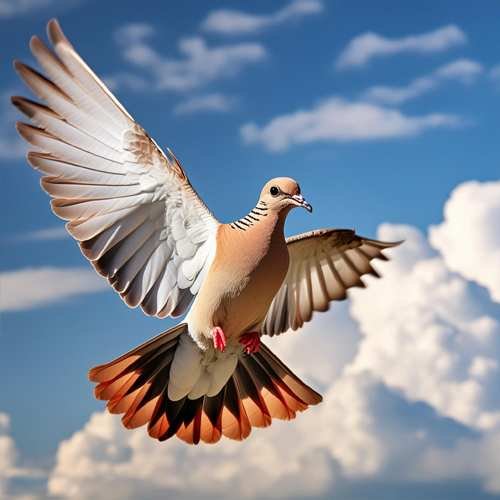
Tips for Attracting Common Ground Doves to Your Backyard
| Tip | Description |
|---|---|
| Provide Cover | Set up local greens, bushes, or mini timber for essential hiding spots |
| Scatter Seeds | Scatter a fusion of millet and crushed kernels nearby the cover |
| Minimize Disturbance | Set feed stations in peaceful spots away from human interaction |
| Supplement with Grit | Supply a tiny bowl with grit (tiny rocks) for improving their digestion (optional) |
Diet and Feeding Behavior
They mainly eat seeds, making them granivores. It looks for food on the ground and prefer seeds from grasses, weeds, and wildflowers. Besides seeds, they might also eat tiny insects and small stones (which help them digest food).
With their compact form and stubby legs, they’re perfect for searching the ground for food. They usually move in small hops or walks, their heads bobbing with every movement. Instead of scavenging, they prefer to use their beaks to gather seeds. Although they can take off swiftly when scared, they favor short quick flights over lengthier ones.
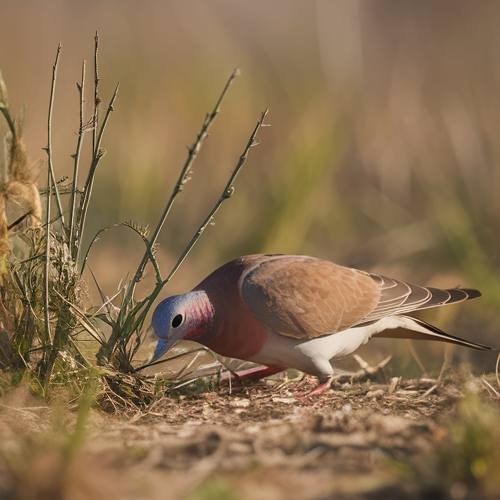
Breeding and Nesting
The time when Common Ground Dove breeds changes based on where they live. Usually, in the southern parts of the United States, it’s between spring and the beginning of summer. These birds are monogamous, so they couple up for breeding.
A humble concoction of twigs and grass is the bird’s nest. Often, find it snuggled hidden amidst high grass or dwarf shrubs. Here, the mother bird nestles two white eggs. Both parents embark on a 14-day incubation journey for their offspring. Upon hatching, these nestlings stay put for another 10-12 days prior to their first flight. Post this fledging, mom and dad continue to watch over them, showing care for some more weeks.
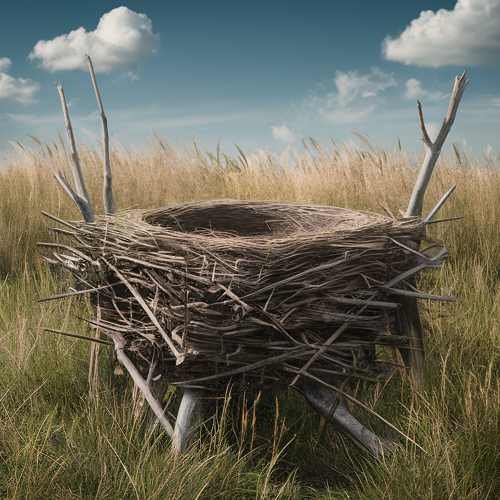
Common Ground Doves have the ability to nurture several families in one season. This allows them to maintain strong numbers in fitting environments.
Conservation Status
The Common Ground Dove holds the ‘Least Concern’ status from the IUCN (International Union for the Conservation of Nature) [IUCN Red List of Threatened Species,]. Strangely, numbers are dropping particularly in the North, although it’s not feared to extinction.
Common Ground Doves are being threatened mainly by disappearing homes, thanks to farming and cities growing. Plus, pesticides mess with the food they eat.
To help, we’re working hard to keep and bring back the places they love like fields and open forests. We’re also teaching people about these birds and why they’re so important. This is key to these birds sticking around for the long haul.
Interesting Facts About Common Ground Doves
| Fact | Description |
|---|---|
| Nesting | Builds simple platform nests on the ground in concealed locations |
| Clutch Size | Typically lays 2 white eggs |
| Incubation | Shared by both parents for around 14 days |
| Fledging | Chicks leave the nest after 10-12 days |
| Parental Care | Chicks cared for by parents for a few weeks after fledging |
| Communication | Soft, repetitive “woo-oo” call |
| Flight | Short bursts of flight, quick takeoffs with whirring wings |
Conclusion
In conclusion, we can recognize the petite, ground-living creature known as the Common Ground Dove by its muted brown colors, reddish patches on its wings (visible when flying), and its distinctive bobbing walk. Ideally, they like semi-open spaces like woods, grasslands, and borders of deserts, particularly where they can hide. Even though these doves are shy, their vocal and food-seeking activities help in finding them. Seeds and bugs are their primary food, and they contribute significantly to the environment. Even though they are currently not threatened, their living spaces are shrinking and insecticides are harmful to them. Efforts to preserve them are focused on education about habitat preservation and public knowledge about these delightful small doves.

